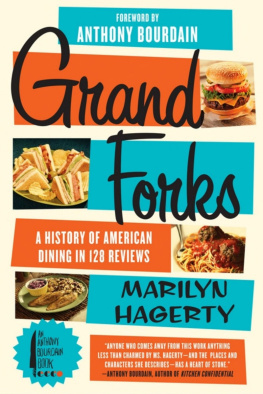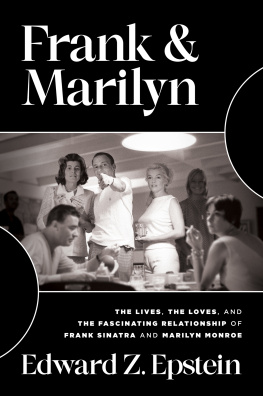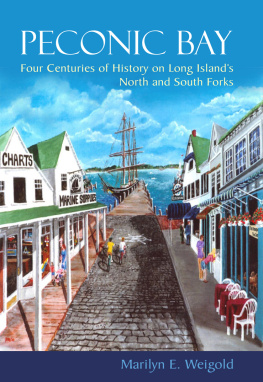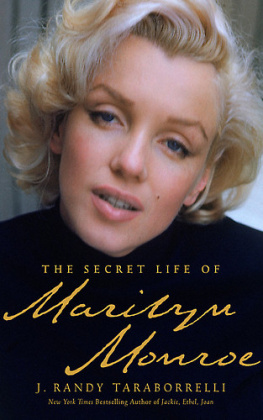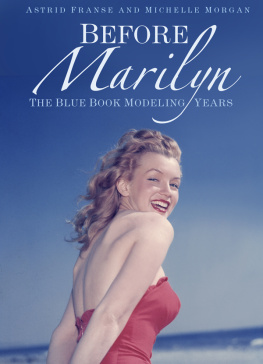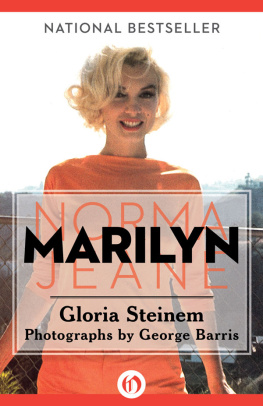
Dedication
This book is dedicated to all the people who have the gumption to work so hard in restaurants across our land.
It is also dedicated to the memory of my daughter Carol Hagerty Werner and in honor of her husband, Curt, along with my daughter Gail Hagerty and her husband, Dale Sandstrom, and my son, James R. Bob Hagerty, and his wife, Lorraine. And especially to the eight grandchildren who brightened the last days of Grandpa Jack Hagerty and continue to make my life worthwhile. They are Jack Golden; Carrie and Anne Sandstrom; Curtis, Mariah, and Anna Werner; and James and Carmen Hagerty.
Contents
Foreword
by Anthony Bourdain
If youre looking for the kind of rapturous food porn youd find in a book by M. F. K. Fisher, or lusty descriptions of sizzling kidneys a la Lieblingor even the knife-edged criticism of an A. A. Gill or a Sam Siftonyou will not find it here.
The territory covered here is not New York or Paris or London or San Francisco. And Marilyn Hagerty is none of those people.
For twenty-seven years, Marilyn Hagerty has been covering the restaurant scene in and around the city of Grand Forks, North Dakota, population approximately 55,000. She also, it should be pointed out, writes a total of five columns a week, about history and local personalities and events, in addition to her writing about restaurants and food. As one might expect, she knows many of her subjects personally. Given the size of her territory, it is not unusual for her to write about the same restaurant two or more times in a single year. In short, she is writing about a community that she is very much a part of.
If you knew her name before picking up this book, it was probably because of her infamously guileless Olive Garden review, which went viral and caused a tidal wave of snarky derision, followed by an even stronger antisnark backlash, followed by invitations to appear on Anderson Cooper and the Today show, dinner at Le Bernardin, an appearance on Top Chef , an Al Neuharth Award, a publishing deala sudden and unexpected elevation to media darling.
Why was that?
What is it about the eighty-seven - year-old Ms. Hagerty that inspired such attention and affection?
Why should you read this book?
Of the seven thousand pages of articles and reviews I read while assembling this collection, there is little of what one would call pyrotechnical prose. Ms. Hagertys choices of food are shockingly consistent: A clubhouse sandwich, coleslaw, wild rice soup, salads assembled from a salad bar, baked potatoes. She is not what youd call an adventurous diner, exploring the dark recesses of menus. Far from it. Of one lunch, she writes: There were signs saying the luncheon special was soup and a Denver sandwich for $2.25. In places where food service is limited, I tend to take the special. I wasnt born yesterday.
She is never meaneven when circumstances would clearly excuse a sharp elbow, a cruel remark. In fact, watching Marilyn struggle to find something nice to say about a place she clearly loathes is part of the fun. She is, unfailingly, a good neighbor and good citizen firstand an entertainer second.
But what she has given us, over all these years, is a fascinating picture of dining in America, a gradual, cumulative overview of how we got from there... to here.
Grand Forks is not New York City. We forget thatuntil we read her earlier reviews and remember, some of us, when youd find a sloppy joe, steak Diane, turkey noodle soup, three-bean salad, red Jell-O in our neighborhoods. When the tuft of curly parsley and lemon wedge, or a leaf of lettuce and an orange segment, or three spears of asparagus fashioned into a wagon wheel, were state-of-the-art garnishes. When you could order a half sandwich, a cup of soup. A prehipster world where lefse, potato dumplings, and walleye were far more likely to appear on a menu than pork belly.
Reading these reviews, we can see, we can watch over the course of time, who makes it and who doesnt. Which bold, undercapitalized pioneers survivedand who, no matter how ahead of their time, just couldnt hang on until the neighborhood caught up. You will get to know the names of owners and chefs like Warren LeClerc, whose homey lunch restaurant, The Pantry, turned down the lights to become the sophisticated French restaurant Le Pantre by night. And Chef Nardane of Touch of Magic Ballroom, who, in his 6,200-square-foot space, served cheesecakes inspired by Debbie Reynolds and Elizabeth Taylor and envisioned an exclusive private membership club with frequent celebrity entertainment. And Steve Novak of Beavers Family Restaurant, who, when Marilyn visited his establishment, spoke of reviving his beaver act, complete with costume, for birthday parties.
And you will understand why the opening of an Olive Garden might be earnestly anticipated as an exciting and much-welcomed event.
Ms. Hagerty is not naive about her work, her newfound fame, or the world. She has traveled widely in her life.
In person, she has a flinty, dry, very sharp sense of humor. She misses nothing.
I would not want to play poker with her for money.
This is a straightforward account of what people have been eatingstill are eatingin much of America. As related by a kind, good-hearted reporter looking to pass along as much useful information as she canwhile hurting no one.
Anyone who comes away from this work anything less than charmed by Ms. Hagertyand the places and characters she describeshas a heart of stone.
This book kills snark dead.
Introduction
When I started writing about restaurants in a weekly column called the Eatbeat, I never dreamed it would catch the attention of Anthony Bourdain or that it would lead to dinner at Le Bernardin in New York City.
All I was thinking was that I write for the Herald the daily newspaper in Grand Forks, North Dakotaand as features editor thirty-some years ago, I wanted to have a restaurant review. After all, I would dine with writers from the Minneapolis Star Tribune and the New York Times when I attended annual meetings of the Association of Food Journalists. We traveled annually to major cities, to Hawaii, to China. They talked of their restaurant reviews.
My favorite pastime is eating. I know how to cook. Long ago, I memorized Betty Crockers Picture Cookbook and the Joy of Cooking . I have edited two cookbooks for my church.
Why not have a restaurant review in Grand Forks? I asked myself. But how could I do it?
We dont have that many restaurants in our city. So I decided it would work if I went to every restaurant in town. That would mean places such as Taco Johns, McDonalds, and the truck stops. To me, these places are interesting. And plenty of people eat in them.
To broaden my Eatbeat coverage, I visited neighboring towns. Dinner or lunch and a drive make a nice outing.
Thus began my routine of reviewing restaurants in the circulation area of the Grand Forks Herald. One review led to another. When I traveled in Portugal, Hong Kong, Tokyo, Shanghai, London, and Brussels, I took the Eatbeat with me. Readers told me they enjoyed the travel and dining experiences vicariously. Twice, I have eaten in the White House; once with the American Society of News Editors and once with the Association of Food Journalists.
My goal with the Eatbeat is to tell readers of the Grand Forks Herald what is available in restaurants and how much it costs. How clean it is, and how the service is. And yes, the condition of the restroom, because it sends a message. Then when readers come in from around the area they know what to expect.
Next page
